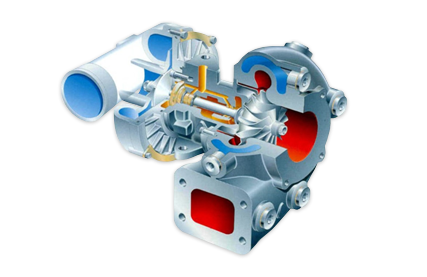COMMON FAILURES
Poor lubrication of the rotating components is a common cause of failure. Due to the incredibly high rotation speeds of the turbines, a lack of lubrication can have a devastating effect. It is prudent to maintain the engine with good quality oil as this is likely to prolong both the life of the engine and the turbocharger.
Another common cause of turbocharger failure is foreign material entering the turbine or the compressor. This is often on the compressor side of the turbocharger, where it is designed to run on clean air. An appropriate, and well maintained air filter, will help protect the air intake side. Foreign material entering the exhaust side of the turbocharger, no matter how small, will cause serious damage to the thin, precise vanes on the turbine. The foreign material can be bits of internal metal components, degrading gaskets or hose. Given the velocity of rotation and the relatively fragile nature of the components, it doesn’t take much to cause damage that can put your turbo out of commission.

Marine turbochargers also have continual exposure to salt air. Over time this exposure corrodes turbocharger housing. This has the effect of gradually increasing the clearance between the turbine blades and the housing, leading to a loss of boost pressure. The engine will suffer from reduced performance and often excessive exhaust smoke.
Running an engine at low rpm can cause a buildup of carbon deposits on the turbine blades,also inside the housing. Due to the small tolerances of the turbocharger turbine wheels any carbon layers on the blades can cause an imbalance, creating vibration, excessive bearing wear, and a potential breakage of the blades. A common symptom is a large soot deposit at the exhaust discharge.
